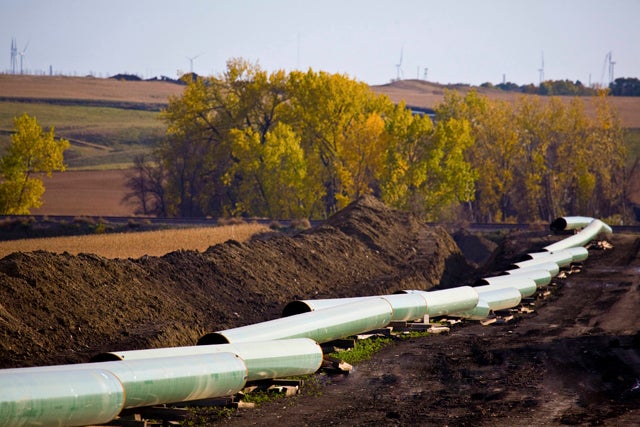Nebraska Governor Dave Heineman (R) sent a letter approving the rerouted Keystone XL pipeline to President Obama and Secretary of State Hillary Clinton on the first day of President Obama’s second term—a measure of the letter’s importance.
The President initially denied approval of the pipeline in January 2012, even after the State Department conducted its environmental review and concluded the pipeline would have no significant impact. Obama claimed that the project did not do enough to protect Nebraska’s environment, so Nebraska went into action and searched for and evaluated alternative routes for the pipeline.
According to Governor Heineman’s letter, the state held public meetings and comment periods and evaluated environmental, health, and economic impacts of the project. They secured assurances from Keystone and TransCanada of emergency situation, transparency, mitigation, and cleanup commitments should something happen, ensuring the protection of the state and of farmers and ranchers near the proposed pipeline.
The pipeline’s rerouted path also avoids the areas some objected to as environmentally sensitive, particularly the Sand Hills. As Governor Heineman notes, the rerouted pipeline would avoid the Sand Hills, fragile soils in the north, and shallow groundwater areas along the Clark County Wellhead Protection Area, and would not significantly disrupt farming.
From the state’s evaluation of the project, the governor expects $418.1 million in economic benefits to Nebraska, $16.5 million in taxes from pipeline construction, and at least $11 million in first-year local property taxes. What lies ahead now is for a new supplemental to the project’s environmental impact statement and comment period from the State Department to be completed and approved before being sent to Obama for a presidential permit. This process has taken four years and will take longer yet, as the State Department announced that it will not meet its promised March deadline to complete the review of the entire project.
Media have portrayed the President in between a rock and a hard place of campaign promises about climate change, “all of the above” energy policy, and more domestic energy jobs. Environmental activists look to him as their “only hope,” and pipeline states and union workers from the Canadian border to Texas impatiently wait for him to approve a project that has been vetted from every necessary authority except himself. The President is not in such a quandary, however.
Environmental concerns and economic interests are not mutually exclusive goals. Americans can—and do—successfully pursue energy needs and environmental stewardship, and it stands to reason that the people nearest the Keystone Pipeline would be the most interested in the project’s success and impact on their communities.
The people of Nebraska have spoken through the office of their governor. What remains is for the President to lead them.































